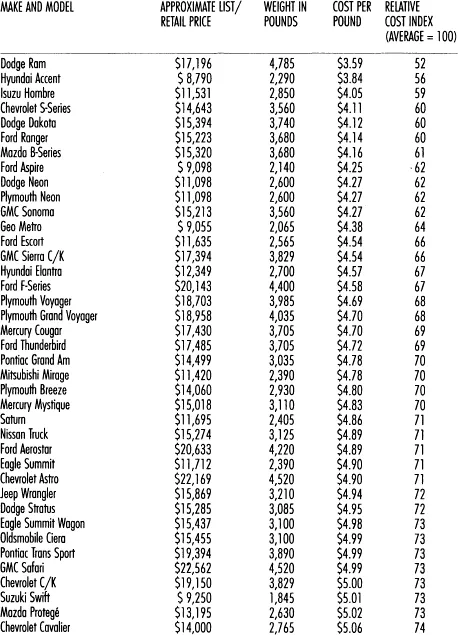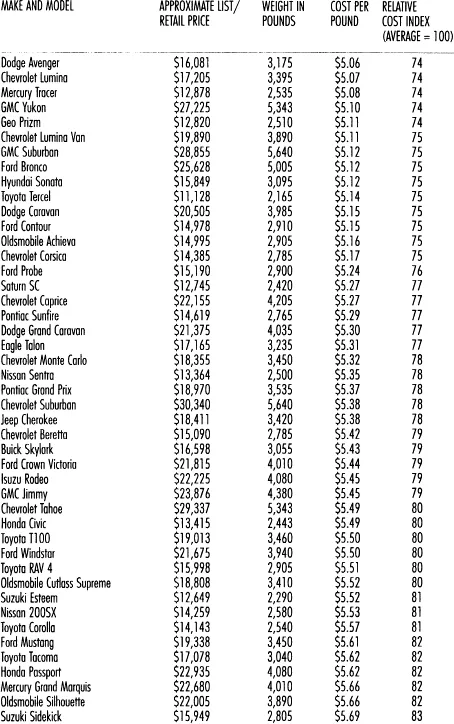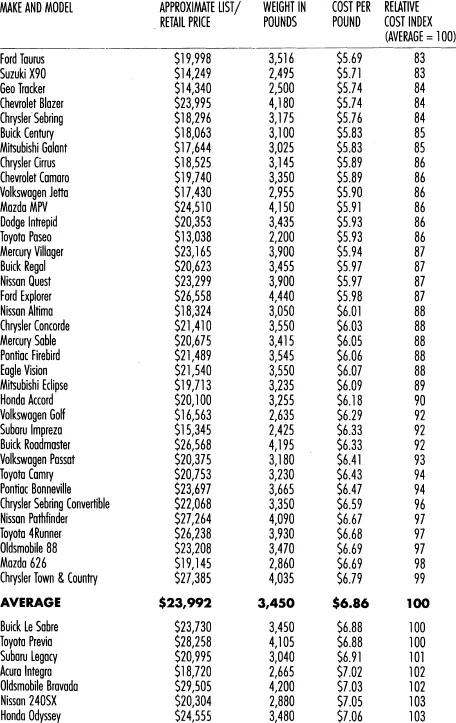
- 275 pages
- English
- ePUB (mobile friendly)
- Available on iOS & Android
eBook - ePub
The Millionaire Next Door
About this book
How do the rich get rich? An updated edition of the "remarkable"
New York Times bestseller, based on two decades of research (
The Washington Post).
Most of the truly wealthy in the United States don't live in Beverly Hills or on Park Avenue. They live next door.
America's wealthy seldom get that way through an inheritance or an advanced degree. They bargain-shop for used cars, raise children who don't realize how rich their families are, and reject a lifestyle of flashy exhibitionism and competitive spending. In fact, the glamorous people many of us think of as "rich" are actually a tiny minority of America's truly wealthy citizens—and behave quite differently than the majority.
At the time of its first publication, The Millionaire Next Door was a groundbreaking examination of America's rich—exposing for the first time the seven common qualities that appear over and over among this exclusive demographic. This edition includes a new foreword by Dr. Thomas J. Stanley—updating the original content in the context of the financial crash and the twenty-first century.
"Their surprising results reveal fundamental qualities of this group that are diametrically opposed to today's earn-and-consume culture." — Library Journal
Most of the truly wealthy in the United States don't live in Beverly Hills or on Park Avenue. They live next door.
America's wealthy seldom get that way through an inheritance or an advanced degree. They bargain-shop for used cars, raise children who don't realize how rich their families are, and reject a lifestyle of flashy exhibitionism and competitive spending. In fact, the glamorous people many of us think of as "rich" are actually a tiny minority of America's truly wealthy citizens—and behave quite differently than the majority.
At the time of its first publication, The Millionaire Next Door was a groundbreaking examination of America's rich—exposing for the first time the seven common qualities that appear over and over among this exclusive demographic. This edition includes a new foreword by Dr. Thomas J. Stanley—updating the original content in the context of the financial crash and the twenty-first century.
"Their surprising results reveal fundamental qualities of this group that are diametrically opposed to today's earn-and-consume culture." — Library Journal
Frequently asked questions
Yes, you can cancel anytime from the Subscription tab in your account settings on the Perlego website. Your subscription will stay active until the end of your current billing period. Learn how to cancel your subscription.
At the moment all of our mobile-responsive ePub books are available to download via the app. Most of our PDFs are also available to download and we're working on making the final remaining ones downloadable now. Learn more here.
Perlego offers two plans: Essential and Complete
- Essential is ideal for learners and professionals who enjoy exploring a wide range of subjects. Access the Essential Library with 800,000+ trusted titles and best-sellers across business, personal growth, and the humanities. Includes unlimited reading time and Standard Read Aloud voice.
- Complete: Perfect for advanced learners and researchers needing full, unrestricted access. Unlock 1.4M+ books across hundreds of subjects, including academic and specialized titles. The Complete Plan also includes advanced features like Premium Read Aloud and Research Assistant.
We are an online textbook subscription service, where you can get access to an entire online library for less than the price of a single book per month. With over 1 million books across 1000+ topics, we’ve got you covered! Learn more here.
Look out for the read-aloud symbol on your next book to see if you can listen to it. The read-aloud tool reads text aloud for you, highlighting the text as it is being read. You can pause it, speed it up and slow it down. Learn more here.
Yes! You can use the Perlego app on both iOS or Android devices to read anytime, anywhere — even offline. Perfect for commutes or when you’re on the go.
Please note we cannot support devices running on iOS 13 and Android 7 or earlier. Learn more about using the app.
Please note we cannot support devices running on iOS 13 and Android 7 or earlier. Learn more about using the app.
Yes, you can access The Millionaire Next Door by Thomas J. Stanley,William D. Danko in PDF and/or ePUB format, as well as other popular books in Personal Development & Consumer Behaviour. We have over one million books available in our catalogue for you to explore.
Information
Topic
Personal DevelopmentSubtopic
Consumer BehaviourAPPENDIX 1
HOW WE FIND MILLIONAIRES
How do we go about finding millionaires to survey? A “C” student of ours once tried to answer this question in a marketing research course. He suggested that we merely obtain a list of people who drive luxury cars. As readers know by now, however, most millionaires do not drive luxury cars. Most luxury car drivers are not millionaires. No, this method will not work!
TARGETING BY NEIGHBORHOOD
The method used in our most recent study, as well as many others we have conducted, was developed by our friend Jon Robbin, the inventor of geocoding. Mr. Robbin was the first to classify—or code—each of the more than 300,000 neighborhoods in America. Using this system, one can code more than 90 percent of America’s 100 million households.
Mr. Robbin coded these neighborhoods first according to the average income for each. Next, he estimated the average net worth of each neighborhood by first determining the average interest income, net rental income, et. al. generated by households in each neighborhood. Then, using his mathematical “capitalization model,” he estimated the average net worth that would be required to generate such incomes. Once he had determined the estimated average net worth for each neighborhood, he assigned each a code. A code of one was assigned to the neighborhood with the highest estimated average net worth; a two was assigned to the neighborhood with the next highest average net worth, and so on. (Also see Thomas J. Stanley and Murphy A. Sewall, “The Response of Affluent Consumers to Mail Surveys,” Journal of Advertising Research [June/July 1986], pp. 55–58.)
We use this estimated net-worth scale to help us find millionaires to survey. First, we select sample neighborhoods that rank significantly higher than average along the estimated net-worth scale. A commercial mailing list company calculates the number of households in each of our chosen high–net worth neighborhoods. Next, the list company randomly selects heads of households within the selected neighborhoods. These are the people we survey.
In our most recent national study, conducted from June 1995 through January 1996, we selected 3,000 heads of households. Each received an eight-page questionnaire, a form letter asking for his participation and guaranteeing the anonymity and confidentiality of the data we collected, and a dollar bill as a token of our appreciation, along with a business reply envelope in which to return the completed questionnaire. A total of 1,115 surveys were completed in time to be included in our analysis. An additional 322 surveys could also be accounted for: 156 address unknown, 122 incomplete, and 44 otherwise usable surveys returned after data analysis had commenced. Overall, the response rate was 45 percent. Out of the 1,115 respondents, 385, or 34.5 percent of the total, had a household net worth of $1 million or more.
TARGETING BY OCCUPATION
We supplemented this survey with alternative surveys. Often we employ what is called the ad hoc method, in which we survey a narrowly defined population segment, as opposed to people who live within affluent neighborhoods in general. These population segments include affluent farmers, senior corporate executives, middle managers, engineers/architects, health-care professionals, accountants, attorneys, teachers, professors, auctioneers, entrepreneurs, and others. Ad hoc surveys are useful because even the best geocoding methods typically ignore affluent people who live in rural areas.
APPENDIX 2
1996 MOTOR VEHICLES: ESTIMATED PRICE PER POUND





APPENDIX 3
BUSINESSES/OCCUPATIONS OF SELF-EMPLOYED MILLIONAIRES
Accountant
Accounting/Auditing Services
Advertising Agency
Advertising Specialty Distributor
Advertising/Marketing Advisor
Aerospace Consultant
Agriculture
Ambulance Service
Antique Sales
Apartment Complex Owner/Manager
Apparel Manufacturer-Sportswear
Apparel Manufacturer-Infant Wear
Apparel Manufacturer-Ready-to-Wear
Apparel Retailer/Wholesaler-Ladies’ Fashions
Artist-Commercial
Attorney
Attorney-Entertainment Industry
Attorney-Real Estate
Auctioneer
Auctioneer/Appraiser
Audio/Video Reproduction
Author-Fiction
Author-Text Books/Training Manuals
Automotive Leasing
Baked Goods Producer
Beauty Salon(s) Owner-Manager
Beer Wholesaler
Beverage Machinery Manufacturer
Bovine Semen Distributor
Brokerage/Sales
Builder
Builder/Real Estate Developer
Business/Real Estate Broker/Investor
Cafeteria Owner
Candy/Tobacco Wholesaler
Caps/Hats Manufacturer
Carpet Manufacturer
Citrus Fruits Farmer
Civil Engineer and Surveyor
Clergyman-Lecturer
Clinical Psychologist
Coin and Stamp Dealer
Commercial Laundry
Commercial Real Estate Management Company
Commercial Laboratory
Commercial Property Management Company
Commodity Brokerage Company-Owner
Computer Consultant
Computer Applications Consultant
Construction
Construction Equipment Dealer
Construction Equipment Manufacturing
Construction-Mechanical/Electrical
Construction Performance Insurance
Consultant
Consulting Geologist
Contract Feeding
Contractor
Convenience Food Stores Owner
Cotton Gin Operator
Cotton Farmer
Cotton Ginning Owner/Manager
CPA/Broker
CPA/Financial P...
Table of contents
- Cover
- Title Page
- Copyright
- Dedication
- Contents
- Tables
- Preface
- Introduction
- Meet the Millionaire Next Door
- Frugal Frugal Frugal
- Time, Energy, and Money
- You Aren’t What you Drive
- Economic Outpatient Care
- Affirmative Action, Family Style
- Find your Niche
- Jobs: Millionaires Versus Heirs
- Acknowledgments
- Appendix 1
- Appendix 2
- Appendix 3
- Endnotes